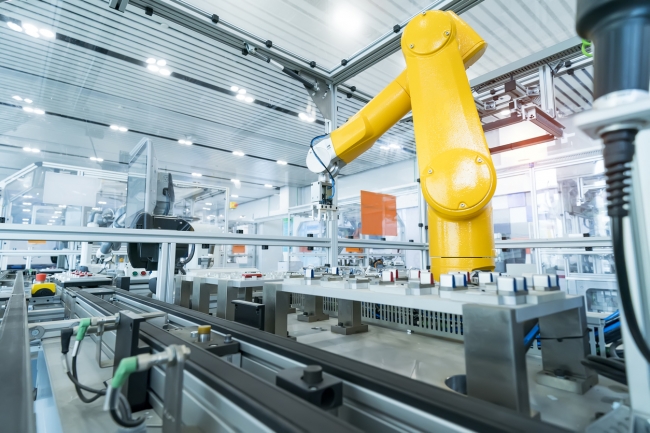4 minute read • published in partnership with ABGI
Insight: The results of innovation in manufacturing and boosting business growth – part 2
At a time when businesses across the UK are grappling with unprecedented challenges, access to funding to increase cashflow and help mitigate the disruption has become a top priority. There is no doubt that British companies which have been involved in R&D and those which turn out to be hugely successful are linked. In this series of articles, we share with you case studies and practical examples of manufacturing businesses that were able to claim funding on projects aimed at improving products for market by making them cheaper, faster, smaller, larger or more efficient. In the second of a series of articles, ABGI looks at process improvement activities that could help boost business growth.
Part 2 – Making things go Faster
When we think of people trying to make things “go faster, we automatically tend to think of the age-old, enduring attempts to increase the acceleration or maximise the top speed capability of cars and motorbikes, by improving the power output from their engine, improving the power/weight ratio or reducing the drag coefficient.
These attempts to push the existing boundaries of what is possible bring with them serious technical challenges, perplexing to even the best engineering minds.

ABGI is encouraging manufacturers to look at process improvement opportunities that could help boost business growth / Picture: Getty/iStock
Faster than a speeding bullet
Take for example, the challenge of increasing power output from a traditional engine, while minimising the production of harmful engine emissions. Or, if you wish to update this scenario to more modern concerns, think of the challenge of improving the acceleration of electric motors, to bring them in line with that of traditional motors.
Alternatively, consider if you will, the need to create new materials to reduce the weight of a car or motorbike, improving the power/weight ratio while maintaining the strength and robustness of the vehicle…
Overcoming the uncertainties linked to these examples of common manufacturing challenges will most certainly require significant research and development effort on the part of the companies involved.
The great news is that, since all of the above R&D work is clearly aimed at overcoming technological uncertainties in order to achieve an advance in technology, it counts as qualifying R&D in the eyes of HMRC, and as such, is likely to qualify for a generous tax benefit.
This means that the companies involved in making vehicles go faster than a speeding (yet clean!) bullet are eligible to receive significant funding to inject back into their business, to accelerate future innovation and business growth. Result!
Manufacturing at double the speed?
BUT, what if the challenge of “making things faster” actually relates to speeding up manufacturing business processes? The continual focus on productivity and operational efficiency means manufacturers continually invest in process innovation in an attempt to reduce processing times and increase operational throughput. At its most basic level, this means finding ways to speed up machines and the processes they perform, while eliminating the negative impacts that faster machines may have on components or finished products.
When increasing machine speeds, the first issue is generally overheating of both the tools and the component being worked. In order to address the potential threat of damage from overheating to either, engineers will experiment with lubricants and coolants to maintain both tools and components at a reasonable temperature, whilst at the same time reducing wear and tear.
Experimentation with both design tools and materials aid in reducing heat build-up, while the development and implementation of new work holding fixtures will minimise the vibration caused by faster machine speeds, thus maintaining accuracy and precision of finished products.
So, at this point, it’s worth remembering that the rewards for innovation don’t just come purely from projects focused on new product development or product improvement projects. The above process improvement examples will fall within the boundaries of the R&D tax relief scheme, offsetting some of the financial risk posed to innovative manufacturing businesses.
What about digitisation?
“Digitisation” covers a wide range of initiatives, but at the very core it means making more effective use of software technologies, to support better informed decisions and control of manufacturing processes.
As a result, the quest for improving process times is no longer restricted to traditional manufacturing equipment. The rise of online services has reinforced the need for faster response times and immediacy of service, as users’ attention spans decline.
In meeting this need software developers are faced with the challenge of developing new communications protocols (driving faster communication between devices and systems), developing and re-appropriating algorithms (making searches faster and more accurate).
The final cherry on the cake is that, should the R&D involved in making products, component or processes go faster results in the company producing Intellectual Property that can be formalised in a patent, then you can opt in to HMRC’s Patent Box programme and benefit from a reduced rate of corporation tax (10%) on ALL profits directly derived from the commercialisation of these IP rights. Which is nice.
Talk to ABGI if you would like to learn more about how you could leverage funds back into your business by claiming R&D tax relief on your product development projects.
